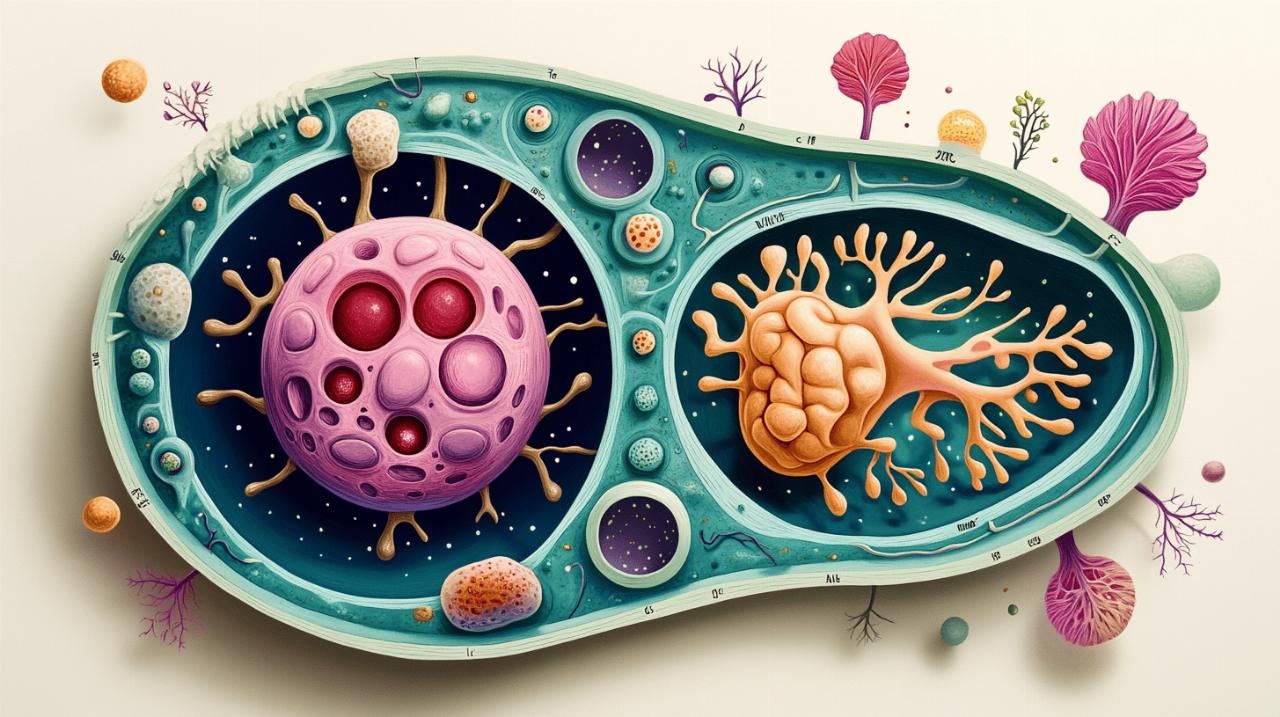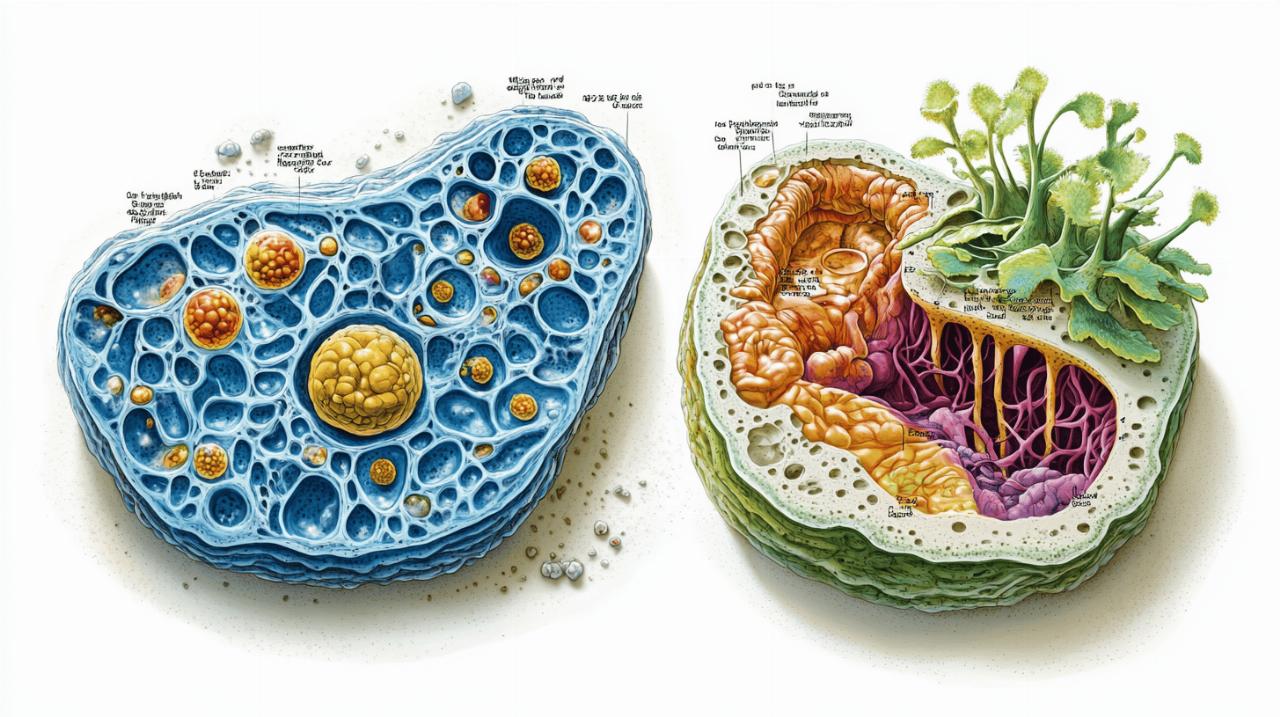When examining life at the cellular level, the fundamental building blocks of all living organisms reveal fascinating adaptations that reflect their unique roles in nature. Both animal and plant cells, while sharing some basic features as eukaryotic cells, have evolved distinct characteristics that enable them to fulfil their specific functions within their respective kingdoms.
The cell wall: a defining structure in plant cells
One of the most significant differences between animal and plant cells lies in their outer structural components. Plant cells possess a rigid cell wall composed primarily of cellulose, which provides crucial structural support and protection. This sturdy boundary allows plants to maintain their shape and withstand environmental pressures, contributing to their ability to grow upright against gravity without the muscular systems found in animals.
Composition and Function of the Plant Cell Wall
The cellulose-based cell wall serves multiple vital functions beyond mere structural support. It acts as a protective barrier against pathogens and mechanical stress while still allowing water, gases, and certain solutes to pass through. This cell wall also enables plant cells to maintain turgor pressure—the internal pressure that keeps plants firm and upright. When water fills the cell, it pushes against the cell wall, creating the necessary rigidity for plant structure without compromising the flexibility needed for growth.
Why animal cells rely solely on plasma membranes
In contrast to plant cells, animal cells feature only a plasma membrane without an additional cell wall. This absence is not a disadvantage but rather an adaptation that provides animal cells with greater flexibility and mobility. The plasma membrane's fluid nature allows for diverse cell shapes and enables processes like phagocytosis, where cells can engulf particles and other cells—a critical function for immune system cells and nutrient acquisition in many animals. This flexibility also facilitates the formation of complex tissues and organs with specialised functions, such as muscles that can contract and relax.
Chloroplasts and energy production pathways
Another defining feature that separates plant cells from animal cells is the presence of chloroplasts, specialised organelles that serve as the site for photosynthesis. These remarkable structures represent one of the most significant evolutionary adaptations, allowing plants to harness solar energy and produce their own food.
Photosynthesis: the plant cell's energy factory
Chloroplasts contain the green pigment chlorophyll, which captures light energy from the sun. This energy is then used to convert carbon dioxide and water into glucose and oxygen through the process of photosynthesis. This remarkable ability to transform light energy into chemical energy makes plants autotrophs—organisms that can produce their own food. The study resources for cell biology highlight this as a fundamental difference between plant and animal cells, showcasing how plants have evolved to be self-sustaining in terms of energy production.
How animal cells generate energy without chloroplasts
Animal cells, lacking chloroplasts, must obtain energy through different means. They rely on the consumption of organic materials—essentially, they must eat. Once nutrients are ingested, animal cells break them down through cellular respiration in mitochondria, organelles present in both animal and plant cells. This heterotrophic lifestyle requires animals to seek out food sources actively, contributing to their need for mobility and sensory systems to locate nutrients—features reflected at the cellular level with structures that support movement and sensory reception.
Nuclear structure and genetic adaptations
While both animal and plant cells are eukaryotic, meaning they possess a membrane-bound nucleus containing their genetic material, there are subtle differences in how this genetic information is organised and expressed that reflect their different evolutionary paths and ecological roles.
Differences in genetic material organisation
The nucleus in both cell types houses DNA organised into chromosomes, but the specific arrangement and number of chromosomes vary between species. These differences extend to the regulatory mechanisms that control gene expression. Plant cells often have adaptations in their genetic material that allow them to respond to environmental stimuli such as light, gravity, and seasonal changes—crucial for organisms that cannot relocate when conditions become unfavourable.
Environmental adaptations reflected in cellular genetics
The genetic adaptations in plant and animal cells reflect their vastly different lifestyles. Plant cells contain genes for photosynthesis and cell wall construction, while animal cells have genetic information for developing complex nervous systems and musculature. These genetic differences manifest in the proteins produced and the cellular structures formed, ultimately determining the organism's capabilities and ecological niche.
Energy storage mechanisms: starch vs glycogen
The way cells store energy provides another striking contrast between plant and animal cells, reflecting their different metabolic needs and life strategies. Both have evolved efficient storage systems, but with distinct chemical compositions and properties.
Plant cells and starch storage systems
Plant cells store excess glucose as starch, a polysaccharide composed of long chains of glucose molecules. Starch is ideal for long-term energy storage in plants, as it's compact and insoluble, meaning it doesn't affect the cell's osmotic balance. Plants typically store starch in specialised plastids called amyloplasts, particularly in storage organs like tubers, seeds, and fruits. This energy reserve enables plants to survive periods without photosynthesis, such as during night-time or winter months.
Glycogen: the animal cell's energy reserve
Animal cells, meanwhile, store excess glucose as glycogen, another polysaccharide but with a more branched structure than starch. This branching allows for rapid breakdown when energy is needed, providing quick access to glucose during sudden energy demands. Glycogen is primarily stored in liver and muscle cells, where it can be quickly converted back to glucose during periods of physical exertion or fasting. The different storage molecules reflect the contrasting energy needs—plants require stable, long-term storage, while animals often need rapid energy mobilisation for fight-or-flight responses and other active behaviours.
The evolutionary significance of cellular differences
When examining cells at a microscopic level, the structural disparities between animal and plant cells become evident. These distinctions reflect how each cell type has evolved to fulfil specific roles within their respective organisms. Both are eukaryotic cells containing a nucleus with linear chromosomes, but they possess unique features that optimise their function.
Plant cells possess a rigid cell wall composed of cellulose, which provides structural support and protection. This feature allows plants to maintain their shape and withstand environmental pressures. In contrast, animal cells lack a cell wall, featuring only a flexible plasma membrane that enables greater mobility and adaptability.
One of the most striking differences is the presence of chloroplasts in plant cells. These specialised organelles contain chlorophyll, which captures light energy for photosynthesis – the process that converts sunlight, water and carbon dioxide into glucose. Animal cells must obtain energy through consuming organic materials rather than producing it themselves.
Adaptation advantages in different environments
The distinctive features of plant and animal cells reflect adaptations to vastly different lifestyles and environmental challenges. Plant cells have evolved to support a stationary existence, where maximising energy production from available resources is critical.
The large central vacuole found in plant cells serves multiple functions that aid environmental adaptation. It helps regulate water levels through osmotic pressure, particularly important when environmental conditions change. This vacuole can occupy up to 90% of the cell volume, pushing cellular contents against the cell wall and maintaining turgor pressure, which provides structural support for the plant.
Animal cells, lacking both cell walls and chloroplasts, have developed different adaptations. They contain centrosomes, which are absent in plant cells and play a crucial role in cell division. Animal cells also typically have lysosomes – organelles that function as waste disposal units, breaking down cellular debris. In plant cells, this function is primarily handled by vacuoles.
Storage mechanisms also differ between these cell types, with plant cells typically storing energy as starch while animal cells store energy as glycogen, reflecting their different metabolic requirements.
Cellular specialisation in complex organisms
As multicellular organisms evolved, cellular specialisation became increasingly important. The structural differences between plant and animal cells laid the groundwork for the development of specialised tissues and organs that perform diverse functions within complex organisms.
In plants, cell walls allow for the formation of rigid structures such as stems and trunks that can support growth against gravity. The presence of plastids, particularly chloroplasts, enables plants to create energy-rich organic compounds directly from sunlight, making them primary producers in most ecosystems.
Animal cells, with their greater flexibility and mobility, have evolved to form tissues capable of contraction and movement. Without the constraints of a rigid cell wall, animal cells can take on a vast array of shapes and functions, from neurons with long projections to flattened epithelial cells.
These cellular differences underpin the diverse strategies that plants and animals have developed for survival. Plant cells are optimised for autotrophic nutrition and structural support, while animal cells are adapted for heterotrophic nutrition and often greater mobility. Understanding these fundamental differences provides insight into how cellular structure determines biological function and how evolutionary pressures have shaped life at its most basic level.





